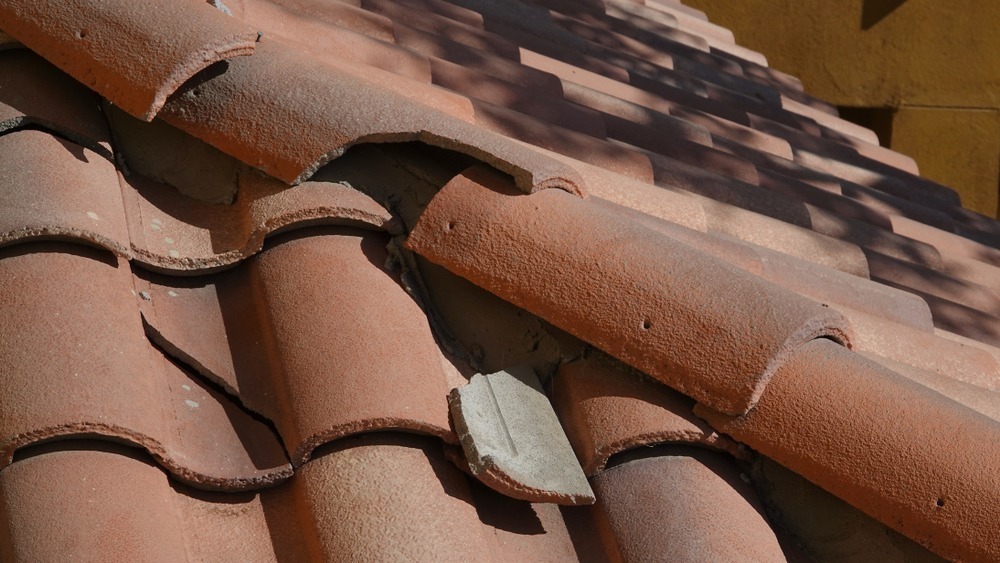Here in the UK, we’re fairly used to unpredictable weather conditions. It wouldn’t be a British summer holiday without some rain, after all! But recently, more extreme weather events have blighted us nearly every month.
From storms to snow, to unseasonable temperatures, we really have had a year of more extreme weather. Let’s look back to take stock of the events, consider what the next twelve months may have in store and see what steps you can take to keep your home safe.
Time to wrap up warm!
December, January, February
Colder temperatures and darker days are expected in winter, of course, but cast your mind back to January, and you may recall the warnings about a ‘snow bomb’ across the UK. The ominous phrase described the severe cold snap, with snow and flood alerts across the country, plus health warnings issued to those vulnerable in lower temperatures. The poor weather even led to a landslip in Southern England, disrupting rail routes across the region.
So, as we approach this season again, what can you do to prepare for these conditions?
Well, if you haven’t done so already, get your boiler serviced now to avoid having to make an emergency repair callout. It’s also worth bleeding your radiators and wrapping pipes in insulation, as well as sealing any loose-fitting letterboxes, draughty chimneys and keyholes.
Talking of insulation, if you’re struggling to keep heat in your home, check your attic and wall insulation. It may need replacing or installing altogether! For extra thermal retention, shut doors to unused rooms, to keep the cold out and heat in. You could even install thermal blinds or curtain lining for added protection.
‘Escape of water’, AKA a leaking pipe, is one of the most common insurance claims – averaging between £6,500-£7,500, according to the Association of British Insurers. Water damage is usually covered by your building insurance, but it’s still a massive inconvenience, especially in winter. Pipes exposed to outdoor temperatures are likely to freeze more easily, so lag any pipes in areas such as the loft or garage, and check for gaps or cracks around ones that enter your home.
And finally, do you know where your stopcock is located? Make sure you do, as you’ll need to turn it off in an emergency! For even more tips, check out our frozen home advice here.
Spring has sprung
March, April, May
We always look forward to the springtime, when after months of drizzly days we get the first glimmers of sunshine. But when the first day of spring finally arrived this year, we had to put up with unseasonably poor weather for weeks.
Luckily, things improved in time for the May Bank Holiday weekend but until then there were weather warnings for wind, rainfall and thunderstorms. Storm Noa brough 70mph winds, while parts of the UK were battered by hailstorms.
When weather warnings like come in, it’s important to be prepared.
For example, get your garden ready by pruning any overhanging, loose, or dead branches that could cause damage in extreme winds, and put away any toys, tools or furniture.
You’ll also want to check your roof because loose or cracked tiles will only get worse in extreme weather conditions. If something looks out of place, consult a professional as soon as you spot it, rather than waiting until it’s too late.
And make sure you’ve got a stockpile of helpful items; torches, batteries and back-up charging devices, in case the worst-case scenario happens.
Then, it’s time to batten down the hatches when a storm does hit. Keep all windows, gates and doors closed and move important items away from them. In extreme cases, hailstones can break through the glass and damage your property. You should also unplug as many electric devices as possible, and even switch off the main point to prevent electricity damage.
After the storm has passed, examine your home and report any damage to your insurer.
Time for a summer holiday – or is it?
June, July, August
Cast your mind back to summer 2022, and it was one of the hottest on record, with temperatures surpassing 40°C. We were all practically melting! But this summer couldn’t have been more different.
Yes, we lucked out with some warm weather in June, but the rest of summer was a rather damp affair, with high humidity, greyer skies and even warnings for heat, rain, and thunder. Beachgoers in Cornwall said it felt more like February than August.
What’s more, Storm Antoni brought 60 mph winds, large waves, and evacuations in vulnerable areas. How can you prepare for these unpredictable conditions?
Keep an eye on your home and regularly inspect your home for any cracks or gaps around windows, doorways and other openings. Sealing these will ensure proper air ventilation and make your energy consumption more efficient.
Keeping your home cool can be a challenge in the UK, as our buildings are mainly designed to retain heat. But you can keep warm air out during the day by shutting your blinds and curtains to deflect heat. A battery-powered fan should be cheaper to run than an electric one and has extra cooling powers if your place a bowl of ice in front of it!
If conditions do become very hot and humid, a dehumidifier can help keep your house cool and dry. When used properly, it can help prevent mould and mildew growing. Just note dehumidifiers can be expensive to run, so consider how and when you use one.
And in a thunderstorm, the same storm advice applies; stay safe inside, have an emergency kit filled with water bottles, batteries, torches and power banks and don’t use any non-essential appliances.
Autumn days turn stormy
September, October, November
After a delayed summer, autumn continued to be surprisingly warm with record-breaking heat in September. That is, until a sudden switch in October, that’s brought with it a series of storms. We’ve battled Storm Agnes, quickly followed by Storm Babet.
The scenes across the north of the UK were devastating, with around 300,000 properties needing protection against rising water levels. Heavy rainfall and high winds have led to flooding, road accidents, massive travel disruptions, power cuts and even a sinkhole appearing in Angus.
It’s a frightening situation for many, and unfortunately, it’s impossible to completely flood-proof your home. But, there are several ways of reducing flood damage.
If a flood warning is issued in your area, stock upon sandbags. These are usually distributed by your local council, or you can buy your own from DIY or building supplies shops. You can also buy air brick covers, that fit over air bricks to stop flood water entering. Make sure you remove them after the flood has passed, to allow the bricks to dry out again. Another quick installation is to fit non-return valves onto drains and pipes. These will prevent sewage from flowing back through bathroom pipes.
Turn off your water, electricity and gas supplies, if you can. Also turn off appliances that use water, such as your dishwasher and washing machine. And in terms of your possessions, make sure to keep them off ground level. Put valuable items and electrical devices on higher ground, either on shelving or upstairs. If large items like sofas are too hard to move, use large sealable bags to protect them.
Important: Call your insurance company before you begin the clean-up operation, and they’ll advise on what to do next, including whether you’re able to make a claim. It is important to speak to your insurer prior to clean up due to the potential biohazards involved.
Will my insurance cover damage from extreme weather events?
Your buildings insurance is there to protect the bricks and mortar, whereas your contents insurance should protect what’s inside. However, we strongly advise reviewing what’s included on your policies, to avoid being uninsured. After all, if the amount your insured for isn’t enough to cover the cost of replacements and repairs, you’ll end up having to meet the shortfall!
And, if you live in a high-risk flooding area, it can be difficult to get insurance, especially for property that has flooded before. Howden has arrangements with specialist providers, so we can provide the right cover for homes at risk of flooding, with all the information you need to make the right decision.
To speak to one of our flood specialists, you can call the team directly on 01865 241 241 and they’ll be happy to offer general advice and talk you through your options. If you’d like to check that you are adequately insured on your existing home and contents insurance policy, get in touch with your local branch who will be happy to run through this with you.
And, for any other insurance queries, search Howden Insurance, give your local team a call or simply pop into your local branch for a chat.
Sources: BBC, ITV, Guardian, Met Office, Home Owners Association





